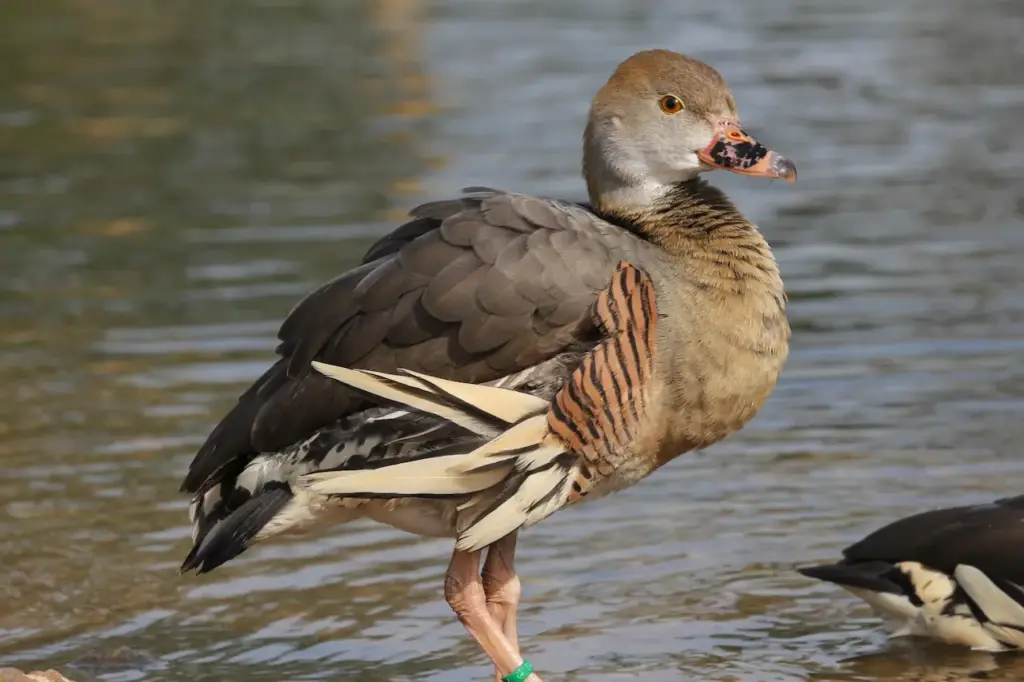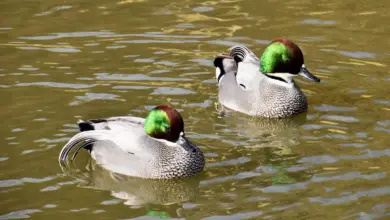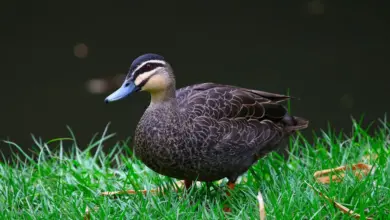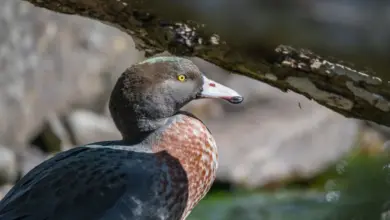The Plumed Whistling Ducks (Dendrocygna eytoni), also called the Grass Whistle Duck, is a whistling duck which breeds in New Guinea and Australia. It is a predominantly brown-colored duck with a long neck and characteristic plumes arising from its flanks. Males and females look alike in appearance.
Description
Measuring 42–60 cm (16.5-24 in) and weighing around a kilogram, it is a long-necked duck with brown upperparts, paler underparts and a white rump.
The chest is chestnut with thin black bars, while long black-margined plumes arise from its flanks. Its bill and legs are pink, and its iris is yellow. The male and female are similar in appearance. The species has a characteristic lowered neck and short, dark, rounded wings while flying.
The Plumed Whistling Ducks call is a characteristic whistle which gives the bird its common name.
Distribution and habitat
The range is eastern, northern and central Australia from the Kimberley across the Top End and Cape York, down to southern Queensland and northern New South Wales on the east coast, although may reach northwestern Victoria inland, in the vicinity of the Murray River.
It is also found in New Guinea. The preferred habitat is tall grassland and savanna, often near bodies of water.
Feeding
Rather than diving for food in bodies of water like other ducks, the Plumed Whistling Duck feeds by cropping grass on land.

Breeding
The Plumed Whistling Ducks breeds during the wet season, generally in January to March, although it can be later in April or, in a few cases, May. One brood is raised per season. The nest is a mattress of grasses or similar material in tall grass, or in or near vegetation as cover. 10 to 12 oval eggs are laid, measuring 48 x 36 mm; 14 or more have been recorded on occasion. Initially shiny and creamy-colored, they may become stained. The incubation period is around 30 days.
Taxonomy
Described by English naturalist Thomas Campbell Eyton in 1838, its specific epithet honours its namer. Its generic name is derived from the Ancient Greek terms dendron “tree”, and kuknos (via Latin cygnus) “swan”. Alternate common names include; Eyton’s Plumed, Red-legged or Whistling Tree-duck, and Grey or Red-legged Whistler
References
- Liddell, Henry George and Robert Scott (1980). A Greek-English Lexicon (Abridged Edition). United Kingdom: Oxford University Press. ISBN 0-19-910207-4.
- Simpson K, Day N, Trusler P (1993). Field Guide to the Birds of Australia. Ringwood, Victoria: Viking O’Neil. p. 174. ISBN 0-670-90478-3.
- Slater, Peter (1970). A Field Guide to Australian Birds:Non-passerines. Adelaide: Rigby. p. 227. ISBN 0-85179-102-6.
- Beruldsen, G (2003). Australian Birds: Their Nests and Eggs. Kenmore Hills, Qld: self. p. 161. ISBN 0-646-42798-9.
- Wade P. (ed.) (1977). Every Australian Bird Illustrated. Rigby. p. 55. ISBN 0727000098.
- BirdLife International (2004). Dendrocygna eytoni. 2006. IUCN Red List of Threatened Species. IUCN 2006. Retrieved on 11 May 2006. Database entry includes justification for why this species is of least concern
Copyright: Wikipedia. This article is licensed under the GNU Free Documentation License. It uses material from Wikipedia.org … Additional information and photos added by Avianweb.
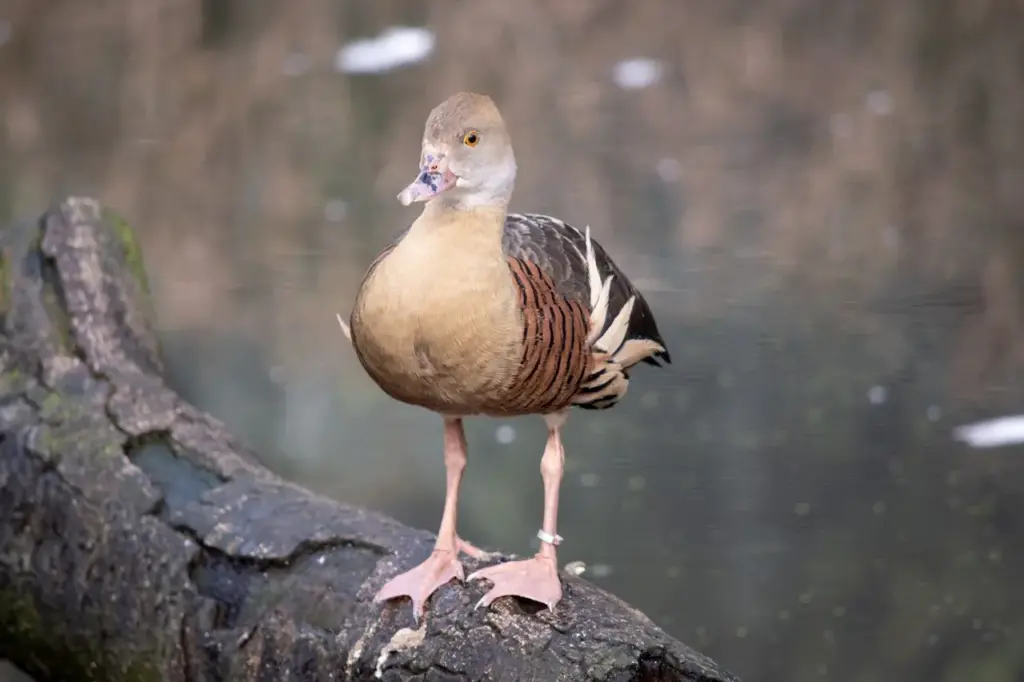
Diet / Feeding:
Fulvous Whistling Ducks feed mainly at night and a large part of their diet is made up by plant foods and seeds.
Plumed Whistling Ducks generally feed on larvae and pupae often found under rocks, as well as aquatic animals, plant material, seeds, small fish, snails and crabs.
Feeding Ducks …
We all enjoy ducks and many of us offer them food to encourage them to come over and stay around – and it works! Who doesn’t like an easy meal!
However, the foods that we traditionally feed them at local ponds are utterly unsuitable for them and are likely to cause health problems down the road. Also, there may be local laws against feeding this species of bird – so it’s best to check on that rather than facing consequences at a later stage.
- Foods that can be fed to Ducks, Geese and Swans to survive cold winters and remain healthy when food is scarce in their environment.
Please note that feeding ducks and geese makes them dependent on humans for food, which can result in starvation and possibly death when those feedings stop. If you decide to feed them, please limit the quantity to make sure that they maintain their natural ability to forage for food themselves – providing, of course, that natural food sources are available.
Please Note: The articles or images on this page are the sole property of the authors or photographers. Please contact them directly with respect to any copyright or licensing questions. Thank you.

